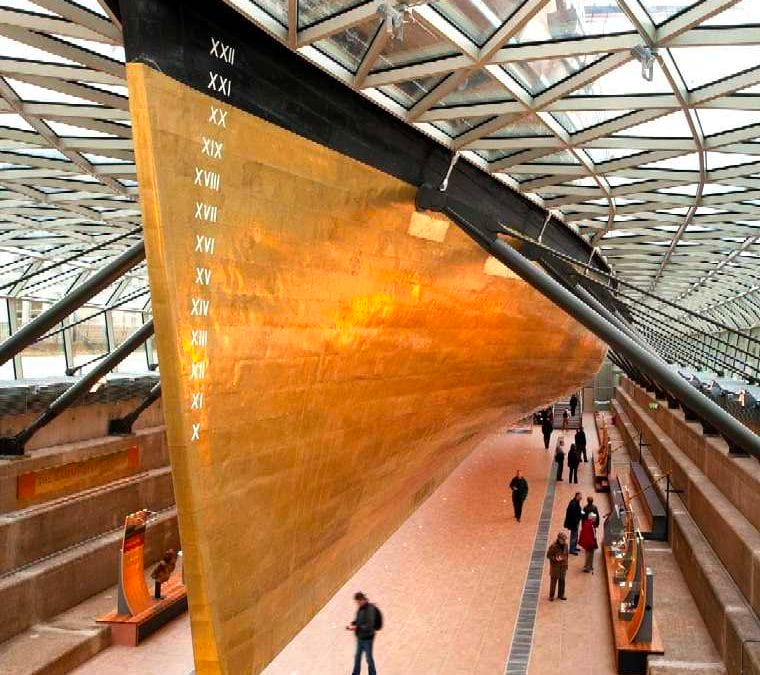-
Posts
13,093 -
Joined
-
Last visited
Content Type
Profiles
Forums
Gallery
Events
Everything posted by druxey
-

Untangling and rerigging or start from scratch?
druxey replied to Rgpracer's topic in Masting, rigging and sails
If this were a valuable historic model, one would try to save as much of the original material as possible, This is not the case here, so Roger's advice is very good advice. -

Chamfering Cutting Tool
druxey replied to Dave_E's topic in Building, Framing, Planking and plating a ships hull and deck
Sometimes scraping alone, done well, is the finishing 'sanding'. Don't scrape after sanding: small abrasive particles shed by the sandpaper and embedded in the wood surface will blunt your scraper. -
Well, having seen and been aboard Cutty Sark, what a behemoth Glory of the Seas is in comparison! Thank you for giving us a better idea of her size this way.
- 3,560 replies
-
- clipper
- hull model
-
(and 2 more)
Tagged with:
-

Corazal - the little Scots dredger that could - and did
druxey replied to druxey's topic in Nautical/Naval History
Keep us posted, She would make a fascinating subject, Brian. -

Corazal - the little Scots dredger that could - and did
druxey replied to druxey's topic in Nautical/Naval History
You could try a scratch-built one, Brian! -
Neat work, but it seems like Olha complicated things more than she needed to. However, it's her model, not mine!
-

NAIAD 1797 by Bitao - 1:60
druxey replied to Bitao's topic in - Build logs for subjects built 1751 - 1800
Interesting variation on a 45 degree holder or jig. The hold-downs on this are something new to me. -
Welcome to MSW now that you've (finally!) introduced yourself, Brett.
-
Well, congratulations on a super and distinctive model with a lot of careful thought behind it. Well done, Steven.
-

Accurate copper plating
druxey replied to allanyed's topic in Building, Framing, Planking and plating a ships hull and deck
Another 'cheat' would be to show the ship 'as launched'. The coppering was done after the ship was checked for leaks and then dry docked. -

Accurate copper plating
druxey replied to allanyed's topic in Building, Framing, Planking and plating a ships hull and deck
Sorry, Allan: the diagonal rows of nails at a few inch intervals go in both directions to form diamond shaped patterns. For model work, this is only academic! For instance, see: https://ussconstitutionmuseum.org/2016/11/18/new-copper-sheathing-2/ -

Accurate copper plating
druxey replied to allanyed's topic in Building, Framing, Planking and plating a ships hull and deck
The plates were also nailed in a diagonal pattern inside the perimeter nails. All were virtually invisible:
About us
Modelshipworld - Advancing Ship Modeling through Research
SSL Secured
Your security is important for us so this Website is SSL-Secured
NRG Mailing Address
Nautical Research Guild
237 South Lincoln Street
Westmont IL, 60559-1917
Model Ship World ® and the MSW logo are Registered Trademarks, and belong to the Nautical Research Guild (United States Patent and Trademark Office: No. 6,929,264 & No. 6,929,274, registered Dec. 20, 2022)
Helpful Links
About the NRG
If you enjoy building ship models that are historically accurate as well as beautiful, then The Nautical Research Guild (NRG) is just right for you.
The Guild is a non-profit educational organization whose mission is to “Advance Ship Modeling Through Research”. We provide support to our members in their efforts to raise the quality of their model ships.
The Nautical Research Guild has published our world-renowned quarterly magazine, The Nautical Research Journal, since 1955. The pages of the Journal are full of articles by accomplished ship modelers who show you how they create those exquisite details on their models, and by maritime historians who show you the correct details to build. The Journal is available in both print and digital editions. Go to the NRG web site (www.thenrg.org) to download a complimentary digital copy of the Journal. The NRG also publishes plan sets, books and compilations of back issues of the Journal and the former Ships in Scale and Model Ship Builder magazines.




